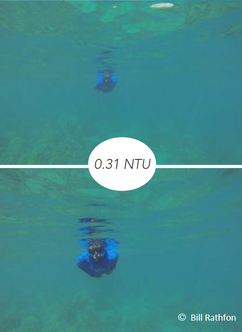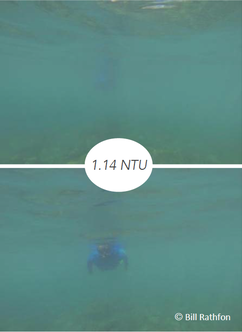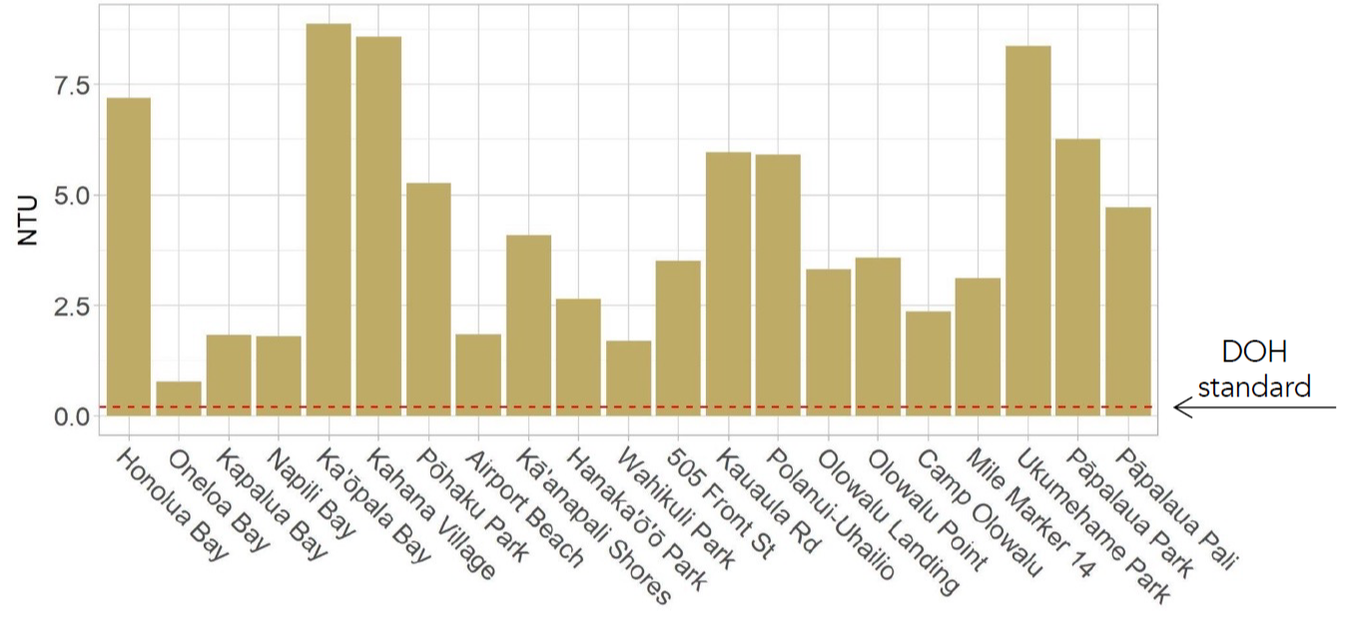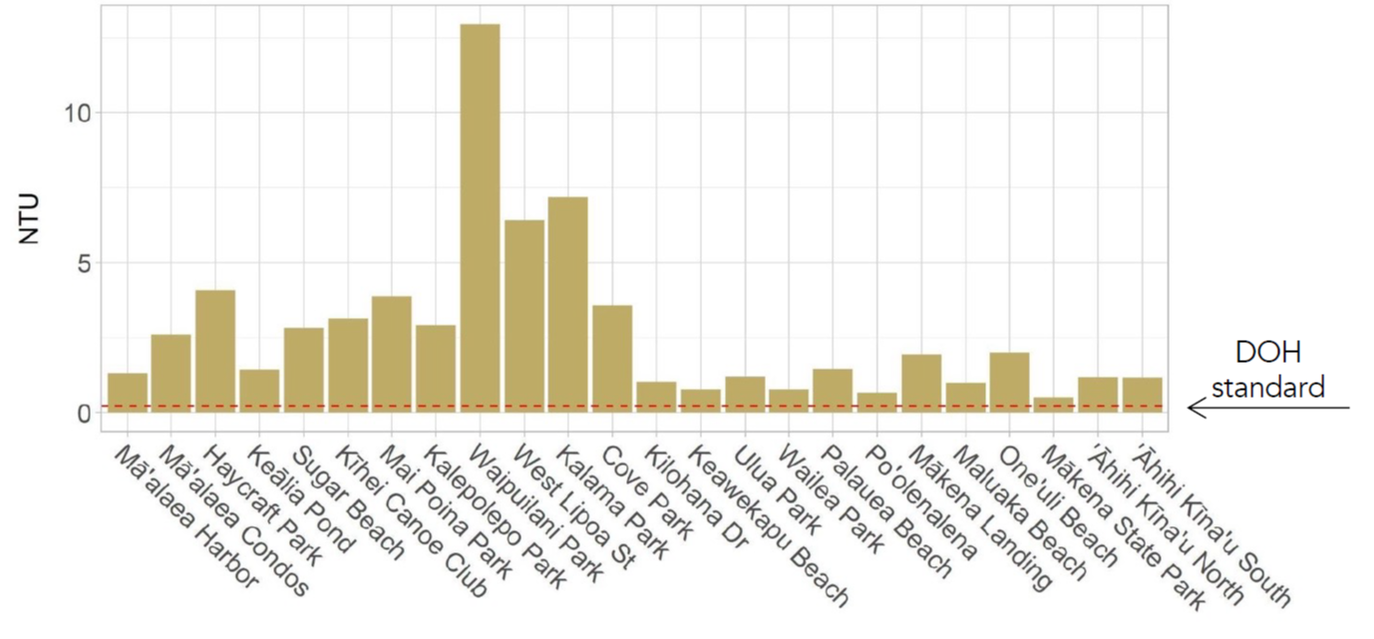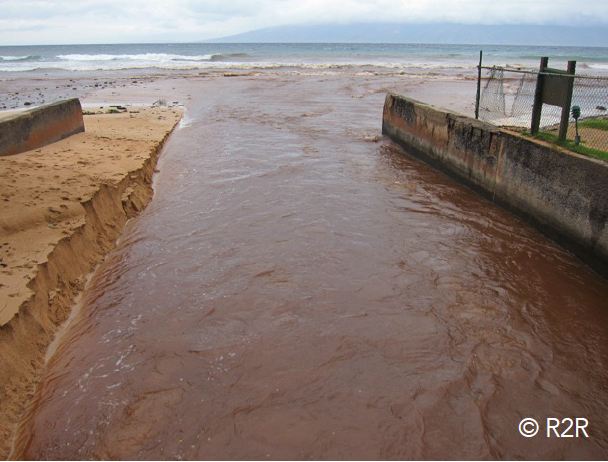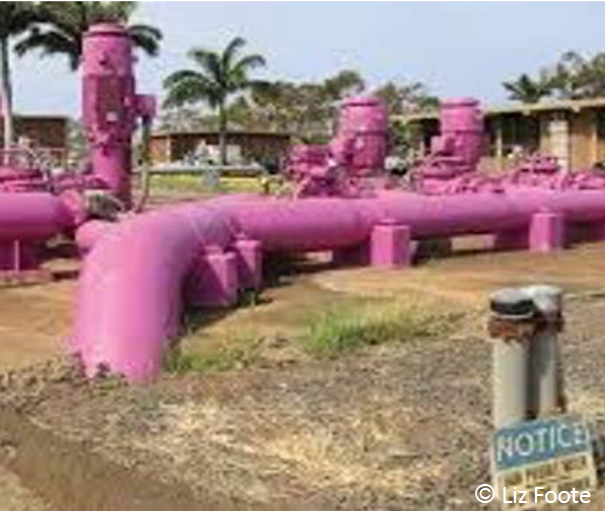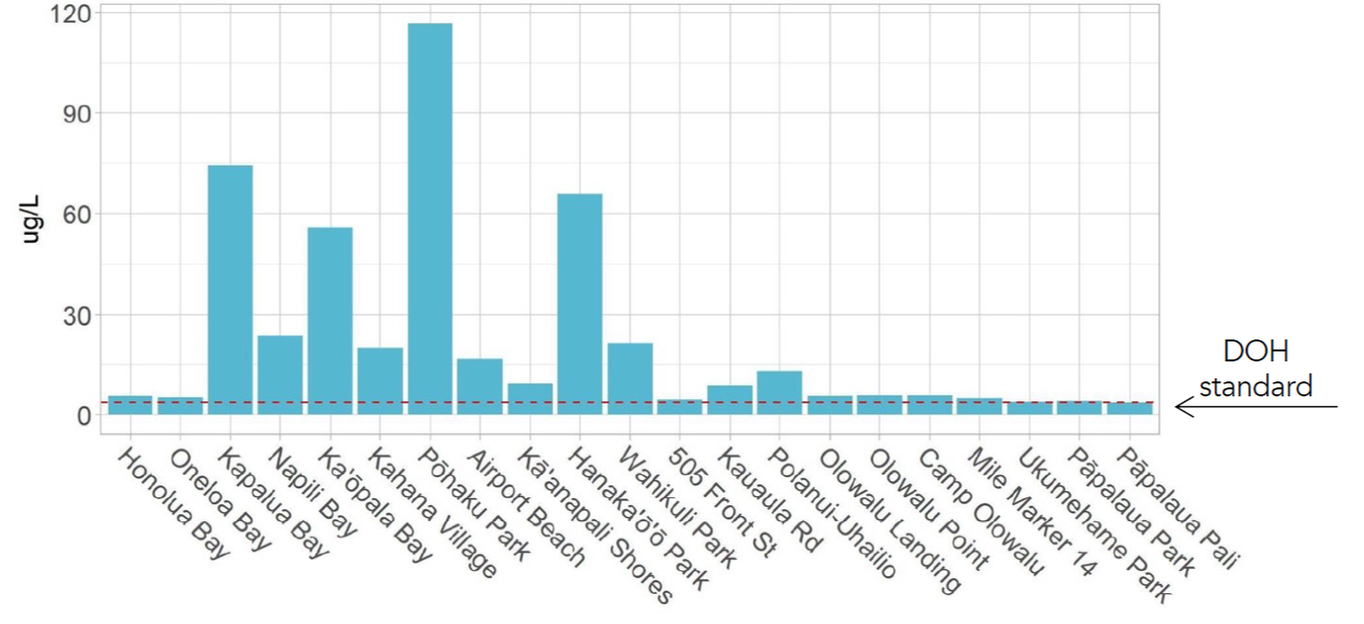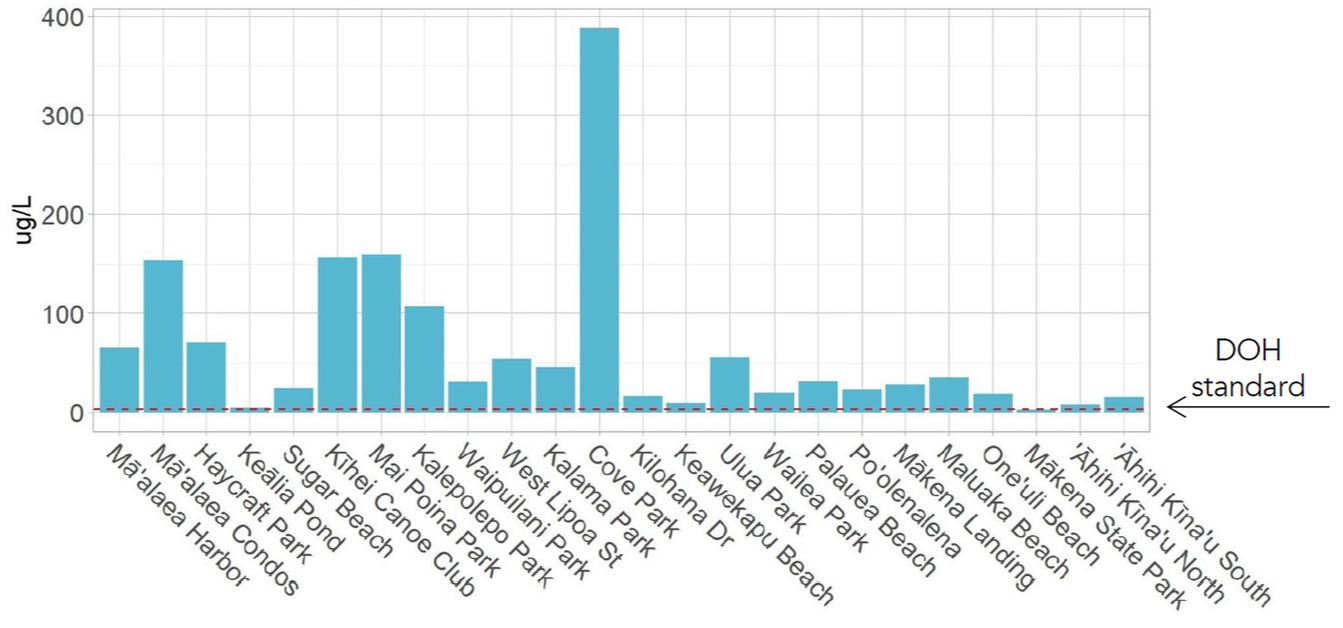Explore Maui's Water Quality
Download our Coastal Water Quality Report 2016 | 2021
|
This report summarizes coastal water quality findings at sites from Honolua Bay to Pāpalaua and from Mā'alaea to 'Āhihi-Kīna'u Natural Area Reserve, revealing high levels of turbidity and nitrates in many areas along the coast and includes recommendations for reducing these pollutant levels to help communities focus their efforts in areas that need it most.
Since 2016, Hui O Ka Wai Ola has collected and analyzed over 3,200 water quality samples from 48 sites and has found that these coastal waters are often degraded by land-based pollutants, including sediments, fertilizers, and wastewater. The report also highlights bright spots, such as Kapalua where nitrate levels have dropped significantly in the last two years, Camp Olowalu where turbidity levels declined, and Keālia Pond where pollutant levels are low, likely due to the wetlands’ ability to filter and absorb pollutants before they reach the ocean. |
Key Findings | Turbidity
|
Turbidity levels always exceed DOH standards. Turbidity is a measure of water clarity. High turbidity levels in leeward Maui are associated with coastal erosion and rains that carry sediments from streams and gulches to coastal waters. Turbidity levels can also be elevated when previously deposited sediments are disturbed and recirculate (aka resuspension). Elevated turbidity associated with rainfall often prompts brown water advisories, and consistently high turbidity is damaging to corals.
The DOH standard for turbidity is 0.2 NTU. Our data show levels of 6.0 NTU or higher at five West Maui sites. |
Turbidity in West Maui
Turbidity in South Maui
|
Key Findings | Nitrates
|
Nitrate levels often exceed DOH standards. Elevated nitrate levels at leeward Maui sites are associated with fertilizers and wastewater that seep into
groundwater systems and emerge through springs on the ocean floor. Elevated nitrate levels can cause algae blooms and smother, weaken, and kill coral reefs. |
Nitrates in West Maui
Nitrates in South Maui
|
Great advice from the Hawai'i Department of Health (DOH)
IF THE WATER IS BROWN STAY OUT! Storm water runoff starts far up in the watershed. This water can pick up all kinds of contaminants as it travels towards the ocean. Please heed the advice from the DOH and don't head to the beach to swim, snorkel, or surf when storm water has been running into the ocean. Even if the DOH hasn't issued a brown water advisory, IF THE WATER IS BROWN STAY OUT!
Visit the Department of Health's Clean Water Branch site for DOH Water Quality Advisories and DOH Water Quality Data.
IF THE WATER IS BROWN STAY OUT! Storm water runoff starts far up in the watershed. This water can pick up all kinds of contaminants as it travels towards the ocean. Please heed the advice from the DOH and don't head to the beach to swim, snorkel, or surf when storm water has been running into the ocean. Even if the DOH hasn't issued a brown water advisory, IF THE WATER IS BROWN STAY OUT!
Visit the Department of Health's Clean Water Branch site for DOH Water Quality Advisories and DOH Water Quality Data.
Photos: Header, Why we care - The Nature Conservancy (Alana Yurkanin)


